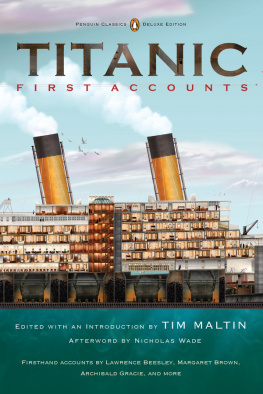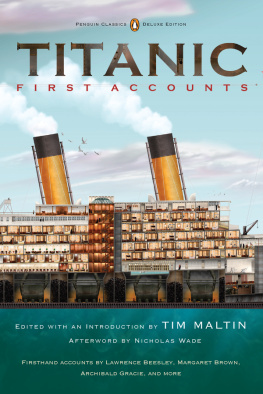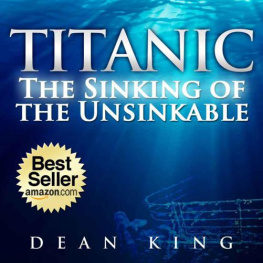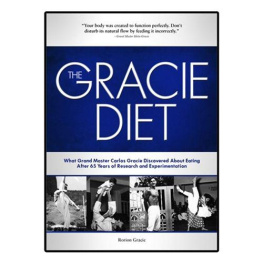Archibald Gracie - The Truth About The Titanic
Here you can read online Archibald Gracie - The Truth About The Titanic full text of the book (entire story) in english for free. Download pdf and epub, get meaning, cover and reviews about this ebook. year: 2012, publisher: Jazzybee Verlag, genre: Home and family. Description of the work, (preface) as well as reviews are available. Best literature library LitArk.com created for fans of good reading and offers a wide selection of genres:
Romance novel
Science fiction
Adventure
Detective
Science
History
Home and family
Prose
Art
Politics
Computer
Non-fiction
Religion
Business
Children
Humor
Choose a favorite category and find really read worthwhile books. Enjoy immersion in the world of imagination, feel the emotions of the characters or learn something new for yourself, make an fascinating discovery.

- Book:The Truth About The Titanic
- Author:
- Publisher:Jazzybee Verlag
- Genre:
- Year:2012
- Rating:4 / 5
- Favourites:Add to favourites
- Your mark:
- 80
- 1
- 2
- 3
- 4
- 5
The Truth About The Titanic: summary, description and annotation
We offer to read an annotation, description, summary or preface (depends on what the author of the book "The Truth About The Titanic" wrote himself). If you haven't found the necessary information about the book — write in the comments, we will try to find it.
The Truth About The Titanic — read online for free the complete book (whole text) full work
Below is the text of the book, divided by pages. System saving the place of the last page read, allows you to conveniently read the book "The Truth About The Titanic" online for free, without having to search again every time where you left off. Put a bookmark, and you can go to the page where you finished reading at any time.
Font size:
Interval:
Bookmark:

the second, 1.200 in the third, with 63 officers and sailors, 322 engineers, firemen, oilers, trimmers and machinists and 471 in the commissary department. The coal consumption of her 150 furnaces was 800 tons a day. The architects of the Hamburg-American and White Star Lines showed great rivalry in constructing ships greater and stronger every year. A common phrase was "unsinkable ships," and there seemed no limit to them. But the whole world was frightfully shocked when, in the night of April 14, 1912 the White Star steamer "Titanic " off Newfoundland plunged against an iceberg and sank within a few hours. Out of 2300 persons carried, only 700 were saved. The Epochs in Ocean Steamship Building to that time were: Wooden paddle wheels auxiliary to sails on ocean liners in 1819, giving increased speed. Iron hulls took the place of wood in 1843, producing stronger construction. Screw propellers supplanted paddles in 1850, permitting greater economy of operation. Compound engines replaced the simple form in 1856, economizing fuel and increasing power. Steel hulls instead of iron were first used in 1879, lowering the oost of construction. Twin screws were adopted in 1889, giving greater safety and diminishing the liability to serious accident. Wireless telegraphby the Marconi systempermitting communication between ship and shore, or between ships at sea distant from each other, now extending 1,000 miles, was adopted in 1901 by the principal transatlantic steamship lines. Turbine engines Parsons systementirely obviating vibration was adopted by the Cunard Line In 1905, the first great transatlantic liner thus equipped being the "Germania," which was placed in the Cunard service in that year.
Font size:
Interval:
Bookmark:
Similar books «The Truth About The Titanic»
Look at similar books to The Truth About The Titanic. We have selected literature similar in name and meaning in the hope of providing readers with more options to find new, interesting, not yet read works.
Discussion, reviews of the book The Truth About The Titanic and just readers' own opinions. Leave your comments, write what you think about the work, its meaning or the main characters. Specify what exactly you liked and what you didn't like, and why you think so.








